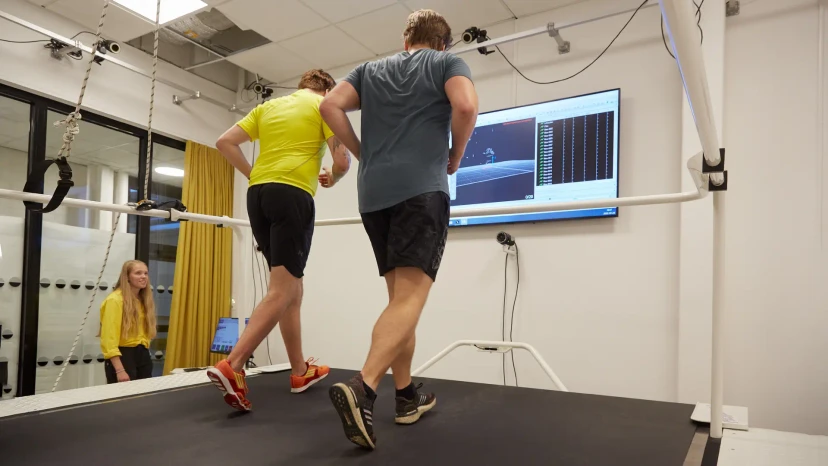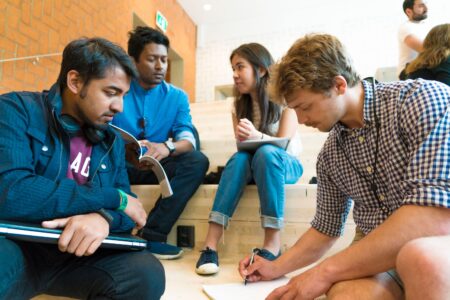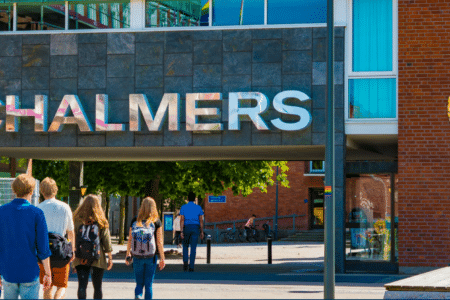With a Bachelor’s in Physics in hand, Albert Rémi from Belgium sought a study abroad experience that extended beyond the confines of a typical Erasmus programme. His checklist for the ultimate location included remaining in Europe, being able to communicate in English, and of course, a top-notch education. Rémi turned to a trusted teacher who was quick to recommend Chalmers University of Technology.
He found everything he was looking for and more in its Physics Master programme. Although initially captivated by its coverage of quantum technologies, his focus shifted toward sustainability and nanotechnology. “My areas of interest have always been very diverse,” he says. Thankfully, Chalmers has no problem supporting evolving interests and unique aspirations — especially when they could lead to world-changing career paths.
The university’s Tracks courses offer an exhilarating blend of creativity, collaboration, and real-world problem-solving. These multidisciplinary courses bring together students from diverse backgrounds — engineers, architects, and entrepreneurs — allowing them to tackle today’s pressing sustainability challenges head-on. Every semester, the courses adapt to address the most current issues, ensuring lessons are both relevant and revolutionary.

Source: Chalmers University of Technology
“I followed several Tracks courses, as I was very interested in the alternative way of teaching,” Rémi notes, having engaged in topics such as Technology, Politics, Society; Modern Energy Systems; Fuel Cell Systems; and Solar Energy: From Photons to Future Societal Impact. Each integrated theoretical knowledge with practical application in their unique way.
For example, the Technology, Politics, Society course required Rémi to write a 4,000-word essay in social science — a departure from the technical writing typical of his background. “It allowed me to deepen parts of my intellectual interests that were not so much discussed in my technical studies, notably about the ethics around technology,” he says.
He visited PowerCell, a leading fuel cell company, as part of his Fuel Cell course, as well as went for lectures from Vattenfall in the Modern Energy Systems course. “Tracks definitely gave me a peek at the vastness of the professional world, and that there are many ways of moving forward from now,” he says.
The recent graduate’s journey is a prime example of how interdisciplinary, hands-on learning can broaden horizons while fostering a deeper understanding of sustainable practices. Catarina Östlund, an industrial designer and faculty member at Chalmers, brings this concept to life through her course on Frugal Design, which introduces students to the concept of designing with minimal resources.
Östlund’s teaching method centres on collaboration and hands-on work in the Fuse makerspace, where students from various academic backgrounds come together to develop physical prototypes. The more perspectives the better, especially since balancing functionality, usability, and aesthetics is no easy feat. This constraint forces students to think creatively about how to reuse and upcycle materials. However, they are never expected to experiment, iterate, and refine their ideas without expert guidance.

Chalmer’s Fuse Box is a large flexible room that can be used for projects and events. Source: Chalmers University of Technology
“One of the important aspects of the course is the teamwork and the communication within the team but also the exchange between teachers and students when working in the workshops and during supervising,” says Östlund. “The students agree on their teamwork, expectations and how to handle situations through a workshop at the beginning of the course.”
Frugal Design isn’t the only course hosted by Chalmers Fuse on the university’s Johanneberg campus. Equipped with a water jet cutter, 3D printer, laser cutter, and vacuum former, as well as workshops for electronics, metal, wood, and textiles, the makerspace empowers all Tracks students to experiment, prototype, and bring their visionary ideas to fruition.
Fuse also features physiology and sports labs, studios for podcasts, film, audio, and virtual reality, as well as a powerfully equipped computer room for advanced design work. Collaboration is further encouraged in project rooms, study spaces, breakout rooms, and even informal environments like lounges and a student kitchenette.
With such recourses, it’s little wonder Chalmers is where bright minds come to shape the future. With state-of-the-art facilities and a strong emphasis on academic customisation, Chalmers University of Technology is recognised as the best educational institution in Europe, according to the International Student Barometer survey. Students consistently praise its comprehensive course content, well-structured programmes, insightful feedback from teachers, and the exceptional quality of its lecturers.
Learn more about its current lineup of Tracks courses today.
Follow Chalmers University of Technology on Instagram, LinkedIn, and YouTube.
Follow International Students at Chalmers on Instagram.












